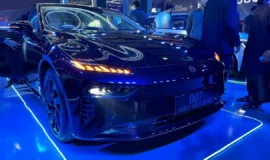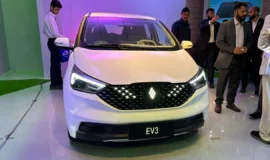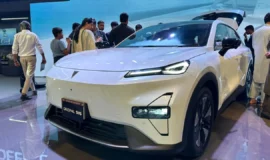
The poor still can’t buy. The middle class is trading bigger cars for smaller ones. The rich are buying SUVs.
For some time, we have been reporting that the Pakistani automotive sector is in serious trouble. The latest PAMA report is a testament to it.
Consider reading: Suzuki WagonR & Swift Sales Decreased By Nearly 75%
In the fast-paced world of the automotive industry, FY24 in Pakistan has marked a troubling milestone. The sector is grappling with a significant decline, reaching a new low in newly assembled car sales over the past two decades. This blog explores the key statistics and trends shaping the current state of Pakistan’s auto market.
Pak Auto Industry: Quick Synopsis
If you are short on time, then take a look at this image to know where the industry stands today.

Pak Auto Industry: Detailed Analysis
However, if you are an auto enthusiast, you would want to know what is happening in the auto sector in detail.
A Two-Decade Slump
The automotive industry in FY24 is witnessing a substantial downturn, hitting a low point not seen in 20 years. The 20-year average for annual sales, standing at 174,000 units, sharply contrasts with the projected FY24 sales of approximately 81,000 units.
October Blues
October 2023 continued the industry’s losing streak with a month-on-month sales decline of 26 percent. This figure, halving the sales from the same month the previous year, underscores the severity of the challenges faced by the sector.
Struggling Volumes
In the first four months of FY24, total volumes plummeted by 44 percent compared to the corresponding period in the previous year. The industry is grappling with an average monthly sales figure of 6,790 units, spanning passenger cars, LCVs, and SUVs.
Shift in Preferences
The share of passenger cars has dwindled from 85 percent in FY21 to 77 percent in FY24. This shift in consumer preferences is evident as more buyers opt for SUVs and LCVs, leaving assemblers adapting to the changing market dynamics.
Demand Dilemma
The lack of demand has forced auto assemblers to take drastic measures, including keeping factories closed, reducing prices, and offering enticing deals to attract customers. However, these strategies are proving ineffective for a particular group of car buyers.
Financing Frustrations
Car buyers who prefer financing through financial institutions are facing a roadblock. The high cost of borrowing has deterred them, leading to a wait-and-see approach until interest rates decrease, and auto financing becomes more favorable.
Middle-Class Maneuvers
The middle class, a significant consumer segment, is navigating the challenges by either drawing from their savings or making a shift to smaller, more fuel-efficient vehicles. This strategic move reflects the adaptability of consumers amidst economic uncertainties.
SUVs and the Wealthy
In contrast, the wealthy are driving a different trend. For them, the allure lies in SUVs. Models like Kia Sportage, Hyundai Tucson, and Sazgar Haval are witnessing growing sales volumes, emphasizing the resilience of this luxury segment.

As FY24 unfolds, the Pakistani automotive industry finds itself at a crossroads. While challenges persist, there are also glimpses of resilience and adaptation among consumers and market players. The road to recovery may be long, but with strategic shifts and changing consumer dynamics, the industry might find a new path forward.








Leave a Reply